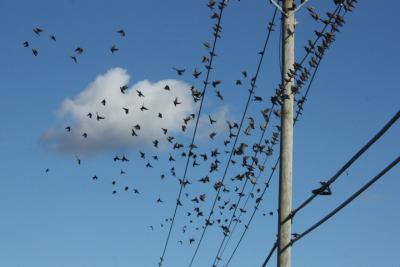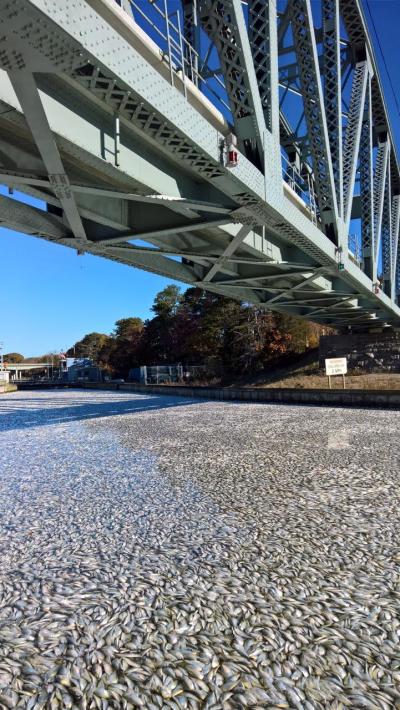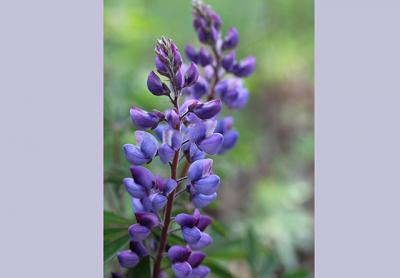Nature Notes: Rays of Hope
Nature Notes: Rays of Hope
Here’s where we get our electric energy from: hydroelectric dams, nuclear power plants, the burning of fossil fuels (coal, oil, natural gas), subterranean heat sources, the sun, wind, and hydrogen.
A scientist in Europe who recently invented a system whereby electricity is produced by the fermentation of urea by specialized bacteria is trying to establish it in poor African countries.
There are lots of ways to produce energy, many of them without byproducts of noxious gases or ones that become heat shields in the atmosphere, e.g., carbon dioxide. The problem is storing it. Batteries of sufficient size and capacity have not advanced much beyond the standard 12-volt automobile battery until recently. Now there is just as much industrial might given to producing mega-load batteries as there is in developing alternative clean energy-producing systems.
Standard solar panels are the least intrusive and are nearly 100 percent clean, 100 percent noiseless, and 100 percent harmless to wildlife and nature. They can be installed anywhere where there is unused space, say on the tops of big box stores, schools, barns, storage buildings, and empty fields. Given the right conditions, one square foot of modern efficient solar panel can generate as much as 16.425 kilowatt hours of solar power in a year. The average U.S. household uses about 12,300 kilowatt hours per year. In other words, 750 square feet of solar panels, or say, 30 by 25 feet of solar paneling, can provide all the electricity one of those average houses requires year round.
Extra space is the key ingredient here. Wind turbines take up less space, but many people find them unattractive. They also kill birds and bats on land and birds in the water while befouling the undersea environment with sounds and vibrations that confuse whales, dolphins, fish, and other marine organisms that use hearing to echolocate and communicate.
While wind turbines need steady winds to generate electricity, solar only works when there is good sunlight and the exposure to that sunlight is right. North-facing roofs don’t work as well as south-facing ones. They don’t work in the dark, or when the sky is clouded over. There is much less sun in the winter months to radiate, consequently spring, summer, and fall are the best months to generate electricity, but winter can help, too.
That’s where Tesla and the big storage batteries come into play. One could rig up several 12-volt car batteries in a series to produce 110 volts or in parallel to run 12-volt lights and other electrical gadgets, but it would take an awful lot of space, and during long stretches of low sunlight or no sunlight, the batteries would have to be charged with an electric generator, the kind that cars and trucks have under the hood.
On the other hand, a combination of building climate enhancements along with solar can bring one a long way to independence from the electric companies and their grids. Barely 20 to 40 feet down the earth is about 50 degrees Fahrenheit. Pumping up water at that temperature, which many of us do for drinking water, and running it though a system called a heat pump, akin to a car radiator, can capture a lot of heat, so during prevailing spells of chilly winter weather your heating system can start with air already well above 32 degrees while the bottom part of your house stays around 50 degrees throughout the year, which can moderate the summer heat, as well.
One needs a lot of space. Golf courses, farm fields, open areas on the ground, like the hundreds of grassland acres at East Hampton Airport, can provide some of that space. Farm fields often lay barren from the end of September through March; that’s six months of space to generate electricity using the sun. Arrays of solar panels can be put up to cover such areas in a matter of days. Like cover crops they would slow the wind and keep erosion down while producing much needed electricity.
The North Fork would be ideal for such solar energy production. Couldn’t farmers use the extra money? They sure could. And for that matter, if you are going to kill a lot of birds out in the ocean with offshore wind cities, why not put the turbines up on shore where you can at least keep track of the dead birds and bats?
One acre of open space can provide for almost 40,000 square feet of solar paneling. If each square foot of solar paneling now in use can provide 16.425 kilowatt hours over the span of a year, multiply that by 40,000 square feet and you get 657,000 kilowatt hours, enough to power 53 average-size houses for a year. One hundred acres would produce enough to power 530 average-size houses. And much of the money would go to farmers who need it as much as we need to save on electricity costs.
Think about it.
Meanwhile I will descend to the basement and get on my bicycle hooked up to the generator hooked up to the 20 12-volt batteries and pedal away.
Larry Penny can be reached via email at [email protected].





